Peru is a wonderful country that offers endless unparalleled natural and manmade attractions. It is known for its many archeological monuments, lovely colonial cities, stunning nature, highly developed ecotourism (especially in the Peruvian Amazon), diverse culture, rich history, great art, delicious cuisine, extreme biodiversity (Peru is one of the world’s 17 megadiverse countries) and huge regional diversity – its landscapes range from vast deserts, a beautiful coastline, the Amazon rainforest, the Andean mountains, and major urban centers. Peru is without a doubt one of the most amazing countries in the world!

Our eleven-day Peru honeymoon itinerary (things to see and things to do)
DAY 1
We arrived in Tumbes on the previous evening. It was pretty late, so we went straight to a hotel.
In the morning, we took a quick walk around the colonial town, had lunch and then took a bus to Trujillo.
DAY 2
After a good night’s sleep in Trujillo, my awesome husband made me breakfast in bed. 🙂 He had already been to the store and bought some Mediterranean food – my favorite, like Italian bread, prosciutto, and mozzarella. Oh, sweet heavens! It was so delicious! <3
Afterwards, we took a taxi to Chan Chan – the largest Pre-Columbian city in the Americas. The entrance fee costs 11 soles (3.4 USD/2.9 EUR). This UNESCO world heritage site is definitely one of the most incredible places we’ve ever been to. The walled compounds, its shapes, and famous carvings are truly unique.

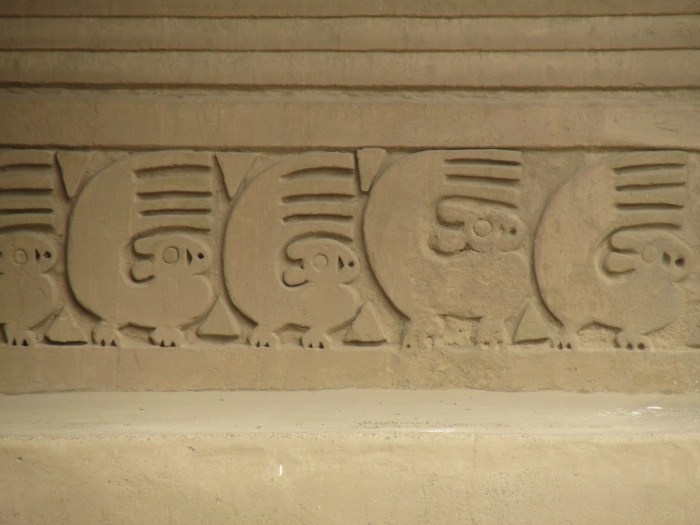

After returning to Trujillo we went straight to Metro – the awesome store, where you can buy international food products in case you are feeling homesick. We did just that and then we went to the hotel, where we enjoyed a tasty dinner.

DAY 3
Travel day. In the morning, we took an 11-hour bus ride to Lima. We enjoyed the views of Peru’s desert coastline along the way.
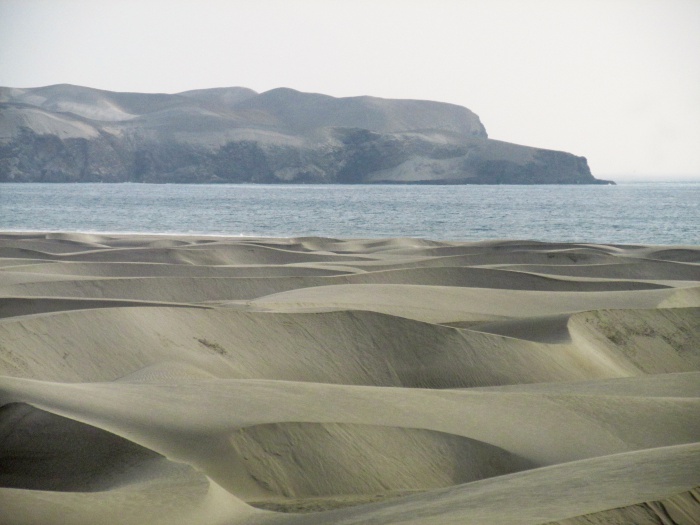
We arrived in Lima sometime in the evening. We took all of our belongings and went straight to the Park of the Reserve (Parque de la Reserva) to watch a water and light show. Afterward, we checked into a hotel.
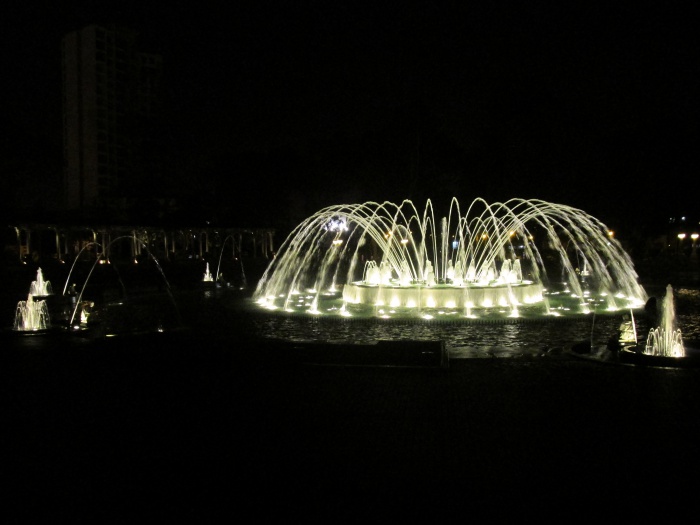
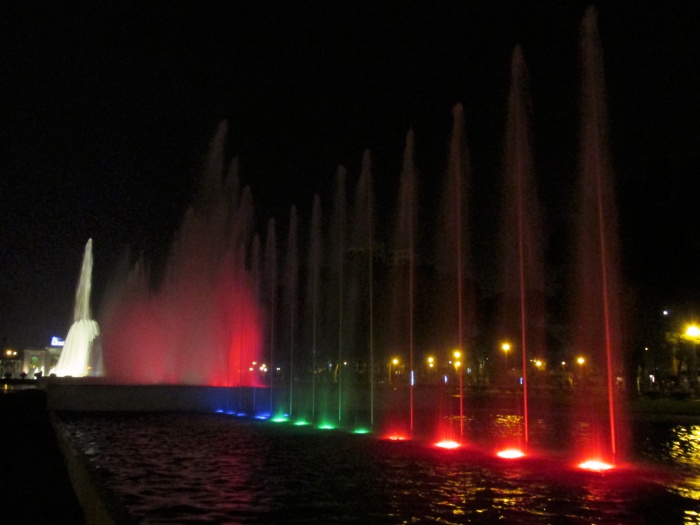

DAY 4
Sightseeing day in Lima. Lima is the largest city in Peru, its capital, and a very popular tourist destination. It attracts numerous visitors with its beautiful colonial architecture, spectacular churches, vibrant culture and lovely beaches. We visited Lima’s main square – Plaza Mayor or Plaza de Armas, which is located in the historic center. This stunning plaza is surrounded by many prominent buildings, like the Government Palace, the Municipal Palace of Lima, Archbishop’s Palace of Lima, and the Cathedral of Lima. We also visited the Monastery of San Francisco and its catacombs, Plaza Simón Bolívar, the Congress of the Republic of Peru, St. Peter’s Church (Iglesia de San Pedro) and we took a walk on Jirón de la Unión – one of the most famous pedestrian streets in the city. In the evening, we took a 4-hour bus ride to Paracas.




DAY 5
On our fifth day in Peru, we woke up in Paracas. In the morning, we took a two-hour boat tour to the Ballestas Islands (Islas Ballestas), also known as the poor man’s Galapagos. On our way to the islands, we saw the Paracas Candelabra, a famous prehistoric geoglyph of mysterious origin – no one really knows, when it was formed, how, why or who was involved in its creation.

Soon, we reached our destination. The islands are known for being an important sanctuary for marine fauna and they really are covered in wildlife. The number of sea lions, penguins, fur seals and birds we saw on and around the islands is truly remarkable. The sight and sounds were simply overwhelming.



After returning to the shore, we took a walk around the resort town of Paracas. The town is mostly known as the jumping-off point to Ballestas, but, as we soon realized, it is quite charming in itself.
In the evening, we took a 3,5-hour bus ride to Nazca.
DAY 6
Nazca lines are probably the most famous geoglyphs in the world. The mystery behind their origin and purpose has stirred people’s imagination for centuries. Most scholars believe they were created by the Nazca people between 500 BC and 500 AD for a religious purpose. In Nazca town, we took a collectivo bus to the Nazca Desert. The bus dropped us off directly in front of the observation tower. The tower offers a pretty good view on three of the most famous Nazca figures – the hands, the lizard, and the tree and it’s by far the cheapest way to see the lines. The sight was spectacular!
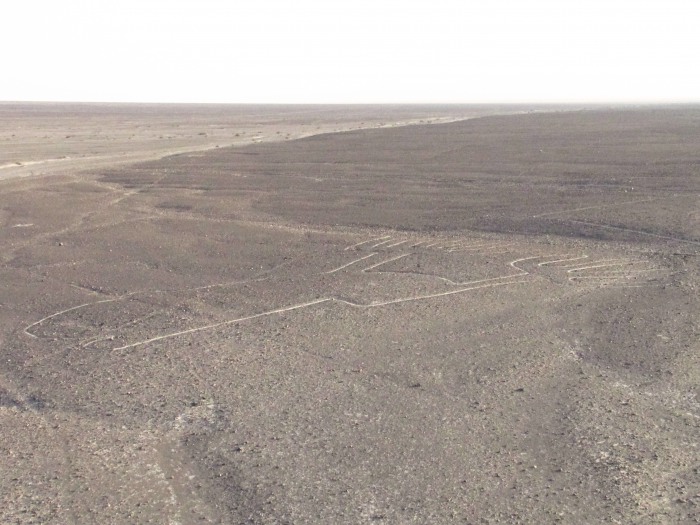



If you have a larger budget, you can also take a panoramic flight over the lines. Warning: walking on the lines is strictly forbidden!
Late in the evening, we took a 12-hour night bus to Cusco.
DAY 7
We arrived in Cusco sometime in the morning. First, we explored the historic capital of the Inca empire, which is a UNESCO world heritage site and a major tourist destination. We loved the city’s main square – Plaza de Armas, its architecture and lively spirit.




In the afternoon, we took a train to Machupicchu Pueblo aka. Aguas Calientes – the closest access point to the famous 15th-century Inca citadel Machu Picchu. 🙂 On the train, they served us coca tea (mate de coca), made of dried coca leaves, which is often recommended for travelers to the Andes to prevent altitude sickness. I have no idea if it’s an efficient remedy, but it sure was interesting to try it. 🙂 By the way, coca tea has a stimulatory effect (similar to coffee) and it’s legal and very commonly used in Peru and some other South American countries.
DAY 8
There are two ways to reach Machu Picchu from Machupicchu Pueblo – by hiking (it’s a 1.5-hour hike) or by taking a shuttle bus (the ride takes approximately 30 minutes). We were on a pretty tight schedule, so we decided to take the bus. Read more about the route and where to buy the bus tickets here. The best time of day to visit Machu Picchu is said to be early in the morning, although the site may be covered in fog. The fog usually lifts after a while and you get to see the site in its morning glory.
We took one of the earliest buses and reached Machu Picchu at around 6.30. At the entrance, we paid an entrance fee (around 70 USD/60EUR), and then finally entered the famous UNESCO World Heritage Site and one of the New Seven Wonders of the World. The view took our breath away – even though it was quite foggy.


We took a few moments to take it all in and then we went exploring. First, we took a closer look at the ruins. We saw the royalty area, the residential district and some other notable buildings, like the Intihuatana, the Temple of the Sun and the Room of the Three Windows. After a while, we decided to climb the Machu Picchu mountain (Montaña Machu Picchu). It was quite a hike (the path is pretty steep and the air is quite thin at this high elevation), but it was totally worth it. At the top (at 3,082 meters (10,111 ft) above sea level), we enjoyed a beautiful view of the world-renowned archaeological site.


Our trip to Machu Picchu was without a doubt one of the main highlights of our 6-month honeymoon. <3 Late in the afternoon, we returned to Cusco and there we took a night bus to Puno.
DAY 9
We arrived in Puno early in the morning. Since Puno – a city, located on the shore of Lake Titicaca has a high elevation of 3,830 m (12,556 ft), the hotel receptionist offered us some coca tea upon arrival. We checked in, did some laundry and then we went to bed – we were exhausted.
After waking up, we realized we were starving. We went to the hotel restaurant overlooking the lovely lake, where we enjoyed a delicious dinner. <3


DAY 10
In Puno, we took a boat tour of Lake Titicaca and the floating islands. Lake Titicaca is known as the highest navigable lake in the world. It has several islands, among them the famous ‘floating islands’ – small manmade islands constructed by the Uru/Uros people. The islands and the reed boats are made of dried totora reeds, which grow on the lake’s banks. Since the bottom layers of the reeds rot away pretty quickly, the locals constantly have to add new layers to the top to maintain the islands.
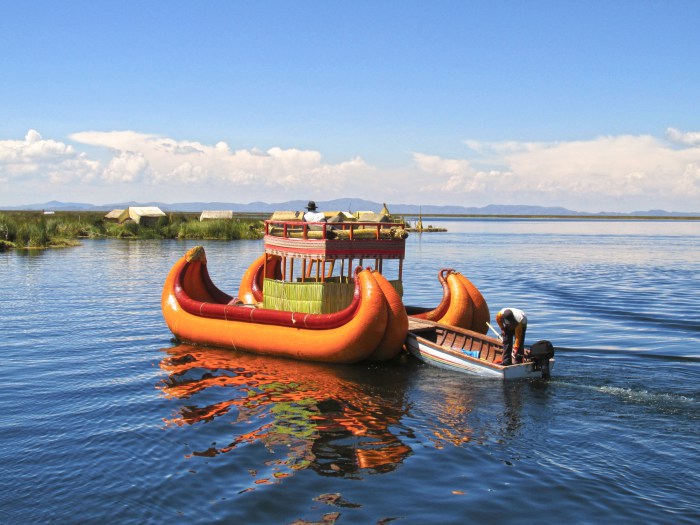



It was really fascinating to see the islands, meet the locals and to learn about their exceptional lifestyle. Visiting the floating islands is a must-do in Peru.
DAY 11
In the morning, we went to explore the picturesque surroundings of the lakefront hotel. Sometime in the afternoon, we took a bus to Copacabana, a Bolivian town, also located on the shore of Lake Titicaca.
♥ Top romantic experience
If you are looking for romance in Peru, you will definitely find it. You can relax on the Pacific coast, or on a lakeshore in the middle of the untamed nature, admire the astonishing remains of ancient civilizations, visit Machu Picchu – obviously, and afterward take a day off in Cusco – the capital of Inca empire, maybe treat yourselves to a spa day, take a wildlife tour, go birdwatching, or enjoy the country’s diverse art and culture.
It’s hard to pick only one top romantic experience. For us, everything was romantic – from sightseeing in Lima and Cusco, visiting all the famous archaeological sites, to the culinary delights on the shore of Lake Titicaca.

♥ Top adventure
Adventure tourism is one of the most important segments of Peru’s tourism industry. Most popular adventures include hiking (take on a jungle trail, a mountain trail or the world-renowned Inca trail), mountain and volcano climbing, mountain biking, zip-lining, horseback riding, surfing, sandboarding, kite surfing, sailing, rafting, rappelling, bungee jumping, paragliding, and caving.
Our favorite adventure was the amazing hike to Machu Picchu mountain.
Are you wondering about the daily budget, the best time to go, visa and immunization requirements, local customs, currency, electricity standards, safety tips and where to stay? Here you can find out all you need to know before visiting Peru.
Have you already been to Peru? We invite you to share your top romantic experience and top adventure in the comment section below. 😉
Next stop: surreal Bolivia! 😉


First off, your pictures are great! My wife and I just got back from our own honeymoon 3 months ago, in Aruba. We had an amazing experience. We like to find high adventure things as often as we can – did Peru have things like ATV tours, or snorkeling? What about ziplines? And I was also wondering what the overall budget should be for a trip like that, including airfare? I like that you got to interact with the local culture there in Peru. In my travels to different countries, like Croatia, Bosnia, Serbia, Montenegro, Italy, and Aruba, the people have always been the most breathtaking and memorable. The natural world is breathtaking too though. I was beyond excited to see the Sea Lions in your Peru adventure :). Congratulations on your marriage, and enjoy your adventures!
Thank you, Jordan. We’d also like to wish you two all the best.
We didn’t do any snorkeling nor zip-lining in Peru, however, we’re sure there are both to be found. I remember some zip-lines in Cusco area … You can find some reviews here.
When it comes to budget it is really hard to say. The plane tickets price depend on your departure location and other expenses on your personal preferences. You can find private rooms for two from $40/night and you can find meals for less than $5/person. The price to visit Machu Picchu is very high (the train ticket and the entrance ticket). We expected prices to be cheaper, to be honest. But at the end, we can say the trip was worth every penny. 🙂
Cheers!